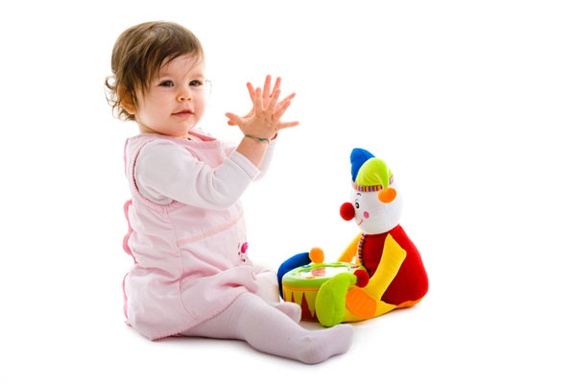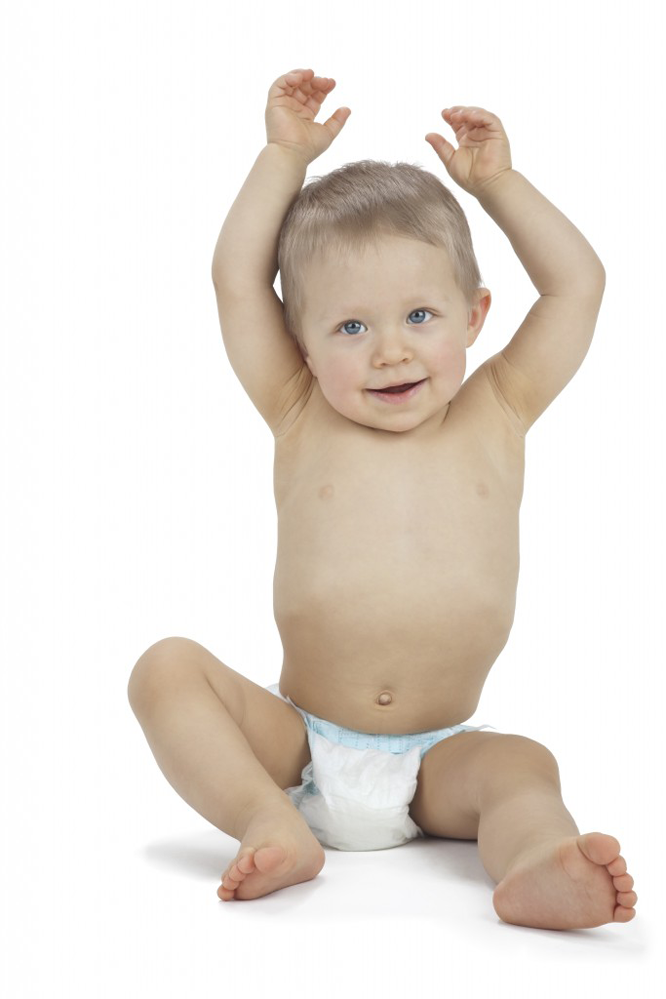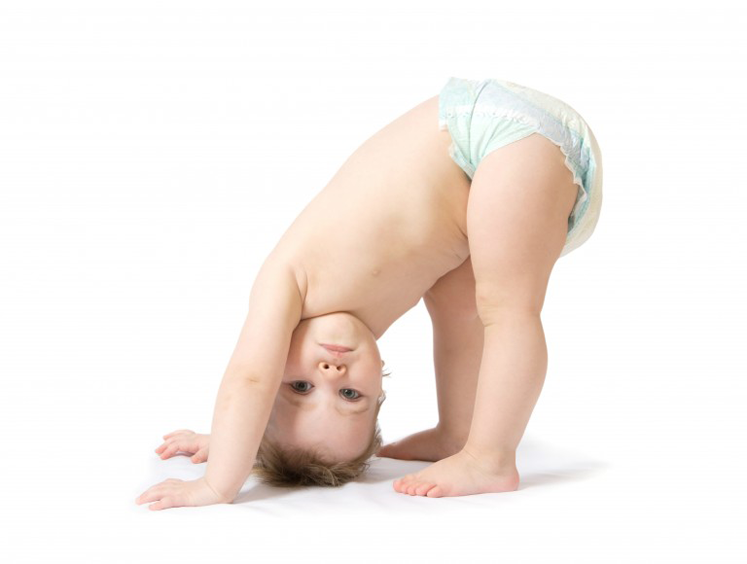Reduce Frustration
Any parent that has ever attempted to console their crying baby understands the frustration if they are unable to help their baby.
Suppose your baby wants her favorite teddy bear but is unable to tell you this with words and is unable to point to her bear because it is not in sight. Because she has no other means to tell you what she wants, she begins to cry. So you begin to guess. Perhaps she is hungry, thirsty, has wet diapers, too cold, too warm, etc. If you finally guess that she wants her bear then you are both happy. If you never guess what she wants, you are both left extremely frustrated.
But what if your baby could make the sign for bear? You would simply go and get the bear. You and your baby would then be satisfied and a great deal of wasted time and frustration would be avoided.


Strengthen the Bond
The ability to communicate is one of the most important bonds between any two people. Teaching baby sign language provides babies with the ability to communicate before they can speak and strengthens the bond of love and trust between you and your baby. You are likely to feel closer to your baby once she begins to speak because she can now communicate with you. If she can communicate with you earlier, then the bond between the two of you will be strengthen earlier. Each time your baby uses a sign and you respond, you share a common world of perceptions and experiences and the connection between you and your baby becomes stronger.
Teaching baby sign language to your baby allows you to share your baby’s world without waiting for her to speak. You are likely to be surprised by what your baby sees, hears and feel. She is looking at the world for the first time.
Boost Baby’s Self-Esteem
Success builds upon success. Your baby can communicate wants and needs sooner using signs, speak sooner with the help of signing, and learn more at an earlier age. The more you and your baby communicate, the greater the opportunity for positive interactions and this leads to higher self-esteem and self-confidence for your baby. Your baby is able to influence her world from a very young age by initiating and participating in conversations while her non-signing peers are limited to grunting, pointing and crying. Your baby is also likely to be more stable emotionally since she feels understood and validated long before she is able to speak. Using signs to express emotions such as happy, sad, mad and scared also helps your baby to recognize and label emotions in a constructive way.


Increase IQ
Research has also shown that babies who use signs to communicate pre-verbally score higher on IQ tests. In fact, studies have shown long term benefits as well. Children at the age of 8 who signed when they were babies scored, on average, 12 points higher on IQ tests when compared to their non-signing peers. Perhaps this is because signing allows babies to learn more about the world at an earlier age by getting feedback from their primary teachers – their parents. If your baby signs the word “cat” while looking at a “dog” you can easily explain the difference. Your baby has now been presented with a real world distinction and thereby given the opportunity to learn. A baby who cannot communicate what she is thinking, cannot be offered such distinctions and consequently cannot learn at the same level as a baby who can sign.
Enhance Memory
Parents and teachers have been using tactile and movement activities (kinesthetic anchors) with children of all ages for many years to enhance a child’s ability to retain and recall information. Put simply, adding a touch and a movement to a word or song helps children remember. This is why almost every child in the US can recite the “Itsy Bitsy Spider” or “I’m a Little Teapot.” This is also why most preschool performances add physical movement to the songs that they present. Movement is simply another way for a child to remember and later access information that they learn. The same advantages can be given to your baby by teaching your baby to sign.
Speak Sooner with Larger Vocabulary

Research has shown that those babies who are taught to use signs to communicate before they can speak actually begin speaking sooner. In addition, these babies are likely to have a larger vocabulary once they begin to speak. This is not surprising since babies that sign have been able to successfully communicate from a very young age. Babies who learn to sign have already forged the link between abstract symbols (signs and words) and experiences in their world. Success with signing is likely to encourage your baby to attempt the next form of communication when her ability to verbalize matures.
When your baby is able to communicate with you by signing, you are more likely to speak with your baby since you will be interacting more with her. If you respond to your baby’s signs and repeat the word and sign many times then you are teaching your baby the symbols (signs and words) precisely at the time that your baby is most interested in learning that word. You are also more likely to clearly mark a specific word that you are teaching her by offering a sign and repeating the word. This allows your baby to identify a single word out of an endless stream of sounds that your baby hears when you speak in sentences. To understand what your baby hears when you speak in full sentences, simply listen to someone who speaks a language that is foreign to you.
By the time your baby begins to speak she has already passed an important milestone thanks to her ability to sign. A baby who signs has made the connection between symbols that she can create and objects and events in her world. She knows that a movement of her hand can represent an object in her world such as an animal. She has already received confirmation of her ability to correctly label objects and events as well as being able to place these objects and events in the correct category. For example, a signing baby has already learned through trial and error that the word cat can represent a real cat, a picture of a cat in her favorite book or a stuffed animal cat that she sleeps with. Basically, a signing baby hits the ground running when she is ready to speak because she now only needs to replace the sign with the word or simply add the word to the sign.
When your baby can sign you are better able to encourage and reward her first attempts at speaking. If your baby says “at” and also signs the word for cat then you can recognize the word she is trying to say and her first attempt is a success. Without the sign for cat you may wonder whether she is saying “hat” or “cat” or “bat” – and the list goes on. It is also sometimes difficult for parents to understand the words of a much older toddler and signing provides an additional clue to what your child is trying to say, ensuring the effectiveness of that specific communication and the continuing accelerated development of speaking.
Remember that your baby will prefer speech over signing as soon as she is able to speak. This is because as your baby matures she will use her hands more to play and will not want to put down objects to communicate with you. Speech also allows your baby to still communicate with you when you are unable to see her and as she grows she will naturally tend to wander further away from you. Your baby also lives in a speaking world and will want to be able to communicate in this manner.
